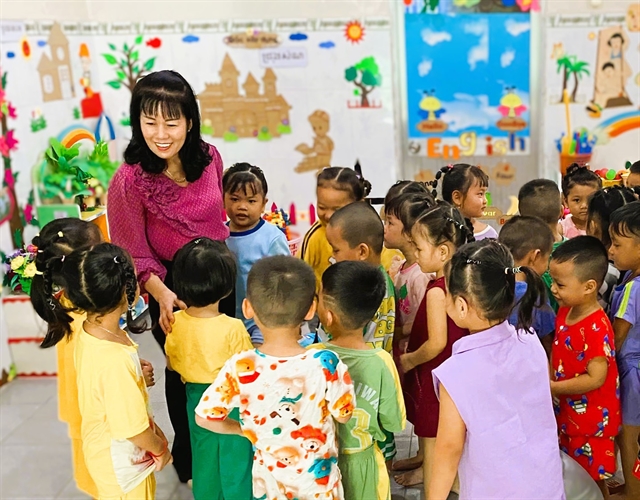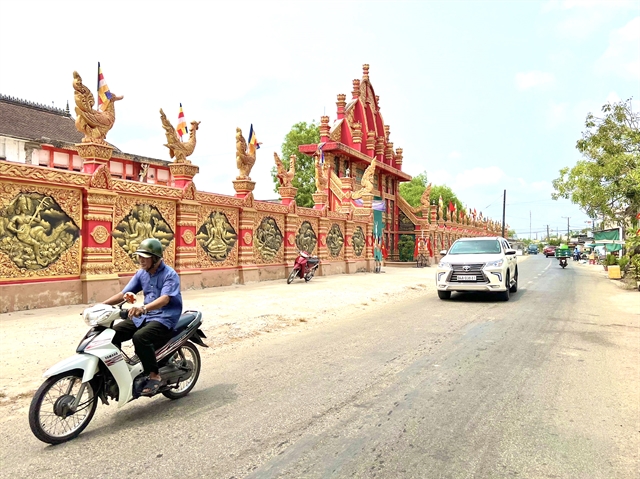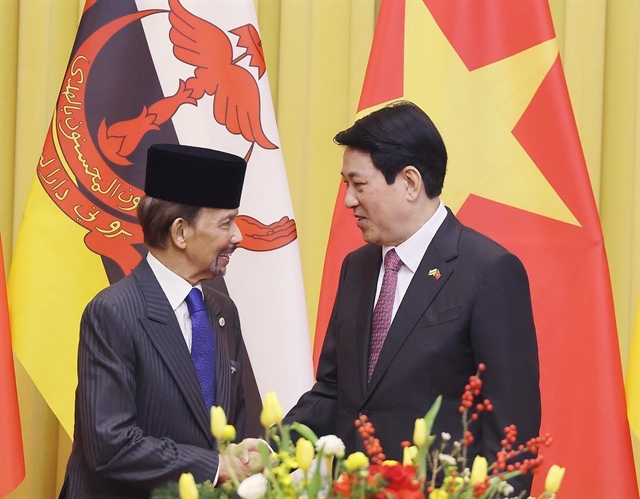.jpg) Society
Society

 |
| Education is receiving increasing attention in ethnic Khmer communities in Cà Mau Province. — VNA/VNS Photo |
CÀ MAU — The lives of the Khmer people in Cà Mau Province are transforming due to better infrastructure and improved livelihoods.
The ethnic group accounts for nearly 6.5 per cent of the southernmost province’s population.
In Hưng Hội Commune, it makes up 29.9 per cent of more than 8,850 people, one of the highest rates.
With funding from national programmes, Hưng Hội has invested in infrastructure, supported production and improved incomes and living standards for its residents.
Sơn Tài, an ethnic Khmer in the commune’s Đay Tà Ni Hamlet, once struggled with farming due to a lack of resources, but after getting a loan of VNĐ40 million (US$1,500) from the Việt Nam Bank for Social Policies and training and production guidance, he converted part of his rice fields to grow vegetables.
He now cultivates 2,500sq.m of cucumbers and harvests 200–300 kilogrammes a day, selling them for VNĐ9,000–15,000 (34–57 US cents) per kilogramme, he said.
Together with 2.5ha of rice, his family earns around VNĐ300 million ($11,400) a year, he said.
His family’s life has improved significantly, he said. He has built a large concrete home, and all his children are well-educated and successful. One has become a doctor, a source of pride not only for his family but also the hamlet.
Besides Tài, many Khmer households in Hưng Hội have escaped poverty and become prosperous.
Thạch Mít, secretary of the Cả Vĩnh Hamlet Party Cell in Hưng Hội, said: “Our hamlet has 244 Khmer households, and now only one remains poor. Most have reached an average or better standard of living, and several households earn billions of đồng each year.”
Hưng Hội’s average per capita income has climbed to VNĐ78 million ($2,970) a year.
Other communes with large Khmer populations, such as Hồng Dân, Phước Long and Ninh Thạnh Lợi, and the wards of Vĩnh Trạch, Hiệp Thành and Giá Rai are also developing rapidly.
The appearance of Khmer villages and hamlets has become increasingly vibrant, with open roads and upgraded cultural and sports facilities. These facilities now meet the community’s needs for daily activities, leisure and entertainment.
Kim Miên, a Khmer in Hưng Hội’s Nước Mặn Hamlet, said: “In the past, most cultural and art performances took place in pagodas. Now cultural centres have been built in hamlets and communes, and ties between the Kinh, Hoa and Khmer communities are stronger.”
 |
| Khmer villages in Cà Mau Province are becoming increasingly vibrant. — VNA/VNS Photo |
Danh Ía of Ninh Thạnh Lợi Commune’s Ngô Kim Hamlet said: “Thanks to the rice–shrimp farming model, living standards keep rising. Roads are paved, cars and motorbikes travel easily, and people no longer rely on boats as before.
“All this comes from the national programme of building new-style rural areas and the national target programme for ethnic communities.”
The transformation in Khmer communities has brought optimism and reinforced people’s confidence in the leadership of the Party, Government and local authorities.
Venerable Tăng Sa Vong, head of Buppharam Pagoda (Cái Giá Chót Pagoda) in Hưng Hội Commune, said: “Support from the authorities has not only improved material life but also strengthened the spiritual life of the Khmer people.
“As deputy chairman of the provincial Solidarity Association of Patriotic Monks and Nuns, I will continue to encourage monks, nuns, and Khmer people to follow Party and State policies, take part in movements and work with other communities to develop family economies and build a prosperous and civilised Cà Mau.”
Ngô Vũ Thăng, deputy chairman of the provincial People’s Committee, said Cà Mau has promptly and effectively carried out national target programmes and development plans for ethnic minority areas.
It has invested hundreds of billions of đồng in infrastructure in ethnic minority-dominated areas, integrated poverty reduction schemes and helped secure housing, water, electricity, farming tools, seeds, livestock, and preferential loans, he said.
“The Khmer people enjoy significant improvements in both material and spiritual life.”
The province would mobilise resources for infrastructure, create favourable conditions for comprehensive socio-economic development, and at the same time preserve and promote the traditional cultural values of all ethnic groups, he said.
Under the national target programme for socio-economic development in ethnic minority and mountainous areas in 2021–30, Cà Mau has been allocated more than VNĐ445 billion ($16.9 million), and disbursed more than VNĐ295 billion ($11.2 million) as of July 2025, or over 66 per cent of the 2021–25 allocation.
The province is working to ensure funds are disbursed on schedule, while proposing more flexible mechanisms to adjust capital between sub-projects to use resources effectively and deliver benefits to people sooner. — VNS


.jpg)

